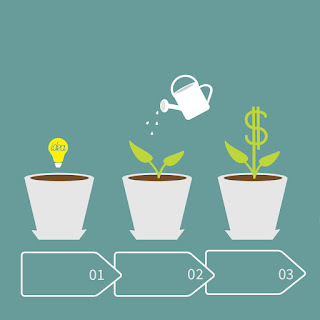Most customer service leaders agree that satisfied customers create customer loyalty which, in turn, leads to higher revenue and greater profits.
Loyal and faithful customers matter. Their devotion typically manifests itself in repeat business, higher margins and positive word of mouth. In fact, according to:
- Bain and Company, a 5% increase in customer retention can improve profitability by 75%.
- Forrester Research, it is 5 times more expensive to acquire a new customer than to retain current clients.
- Nielsen, over 75% of consumers are most likely to buy a new product when referred by friends or family.
- The Direct Marketing Association, the average company loses between 10 and 30% of its customers annually.
- Gallup, a fully engaged customer represents an average 23% premium in terms of share of wallet, profitability, revenue, and relationship growth compared with the average customer.
We agree that strong customer loyalty can enable companies to significantly out-perform their competition, but only if the necessary strategies are in place to turn customer satisfaction into revenue-generating action. These strategies are the critical link between a customer's feelings and whether or not they act upon those feelings.
Customers may love you. They may intend to invest in your products and services and talk about them with others...but do they actually translate intentions into real purchases, referrals and testimonials?
To gain the most from fulfilling your brand promise, you need to do whatever it takes to make it easy for your best customers to buy and recommend you. Our customer loyalty experts tell us that there are three simple steps to converting customer loyalty into customer action...all possible, all under your control, and often necessary to realize actual revenue growth.
The bottom line - when customers believe in your brand promise, they give more.
Read the 3 "Must Have"Steps to Convert Customer Loyalty into Customer Revenue
About LSA Global
Founded in 1995, LSA Global is a leading performance consulting and training firm that helps high growth technology, services, and life-science companies create a competitive advantage by powerfully aligning their culture and talent with their strategy. Learn more about getting aligned
Complacency is the enemy of high performance.
From a sporting perspective, only 11% of NBA teams since 1971 have been repeat champions. In the NFL, only 8 teams have won back-to-back Super Bowls in the last 50 years. From a corporate perspective, almost one-third of the companies listed in Jim Collin's best-selling business book, Good to Great, are either defunct or at less than half of their market cap while another 50% of the companies studied are now at or below the performance of their peers.
Yet, as leaders, we are charged with putting our teams in situations that consistently bring out their best. Andy Grove, the former CEO of Intel, may have put it best when he said, "Success breeds complacency. And complacency breeds failure."
Unfortunately, examples of corporate complacency are not difficult to find. One of our favorites includes Research in Motion (RIM), the maker of the once ubiquitous and market-leading BlackBerry that first allowed people to send and receive email from a handheld device. It was dubbed the "Crackberry" and became a "must have" for CEO's, world leaders, athletes and Hollywood celebrities.
Founded in 1985, RIM became one of the world's most successful high-tech companies. Then, thanks to the introduction of Apple's iPhone, RIM's market share dropped from 50% in 2009 to less than 3% today. While BlackBerry was riding high and making incremental improvements, Apple created an entirely new experience with a cooler, better and more stylish iPhone. If RIM had not been complacent when they were on top and had spent more time looking where the market was going, the story today might have been quite different.
From a human performance perspective, we believe that leaders must fight complacency by constantly creating a meaningful performance gap between where you are and where you want to be. If the next level of performance is "just possible," then employees will be stimulated to perform at their peak.
For example, comparing yourself to a more successful person can encourage greater effort on your part to achieve. Conversely, if you are the higher achiever, you may be tempted to relax, get complacent and let others catch up. These are critical and foundational concepts behind creating a High Performance Environment. As a leader, your number one job is to stimulate greater performance from your team, and one of your most important tasks is to identify clear, transparent, and fair standards for job performance. This clarity will help you lead the fight against complacency.
Be on the lookout for these four key signs of complacency:
- Satisfaction with what is rather than what can be.
- The sense that no more can be done.
- Lackadaisical acceptance of the traditional ways of behaving.
- Lack of interest in innovation and continuous improvement.
Once you introduce a new and higher standard, you will need to offer employees the support they need to be successful in their journey toward improved performance.
How to Create a High PerformanceEnvironment
About LSA Global
Founded in 1995, LSA Global is a leading performance consulting and training firm that helps high growth technology, services, and life-science companies create a competitive advantage by powerfully aligning their culture and talent with their strategy. Learn more about getting aligned


